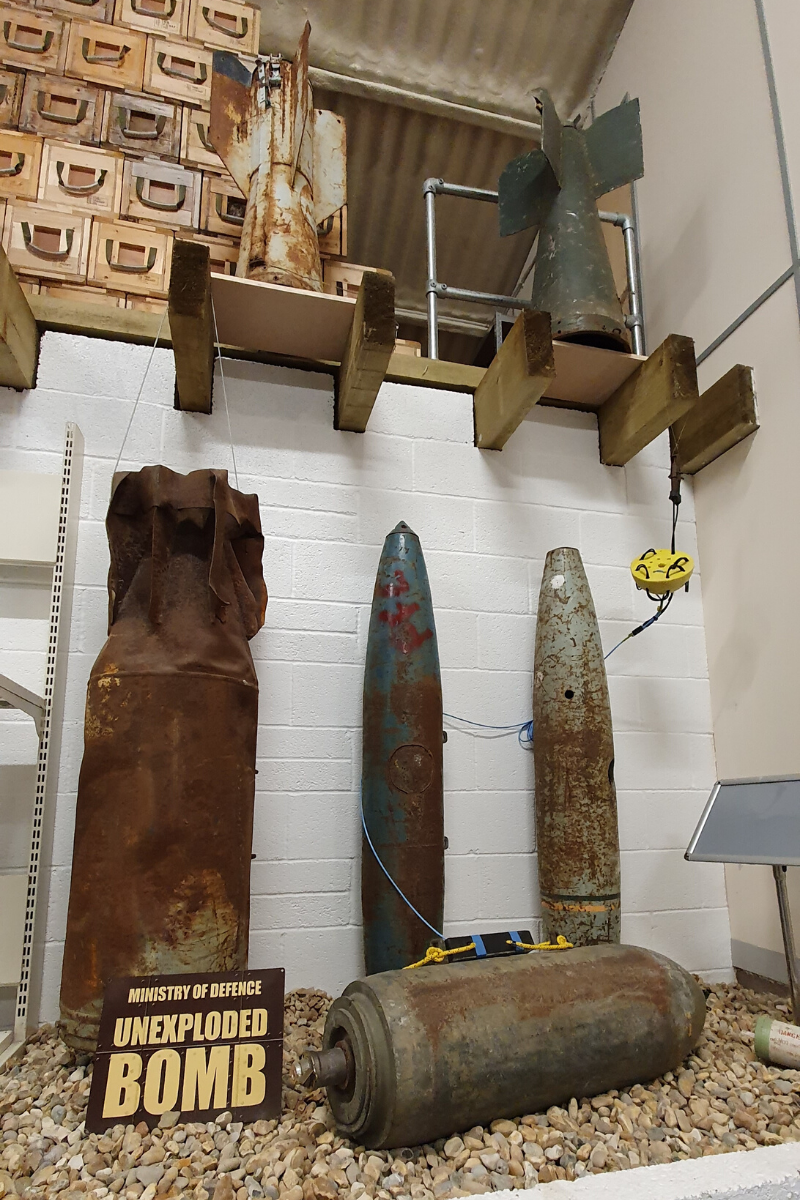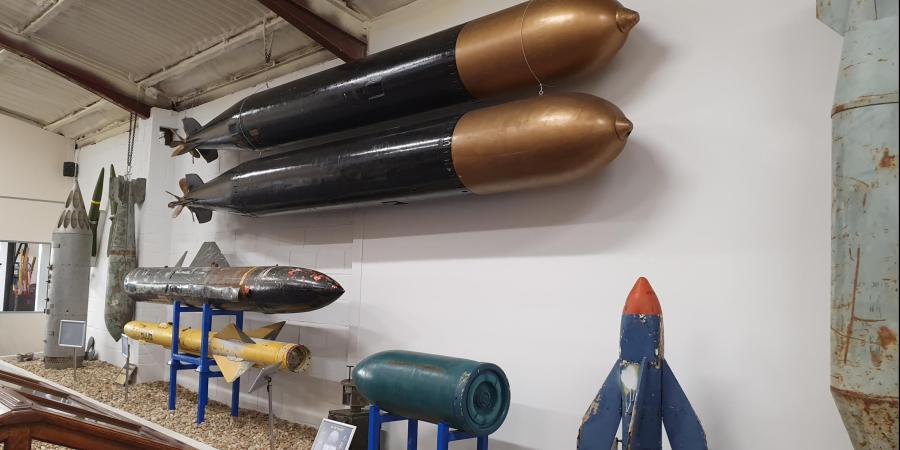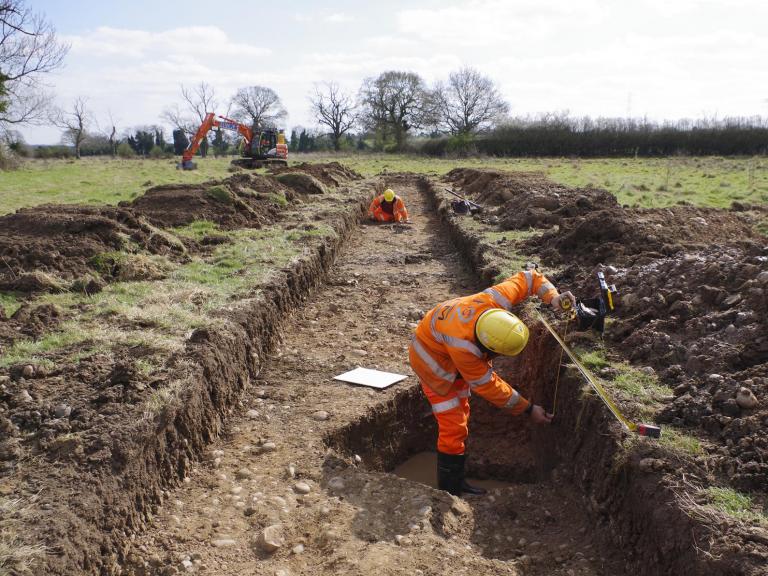Two weeks ago, a group of us from the Coastal & Marine and Fieldwork departments here at Wessex Archaeology were lucky enough to partake in two days of Unexploded Ordnance (UXO) training, run by Ramora UK. Ramora UK is a specialist company delivering explosives related services including Explosive Ordnance Disposal (EOD) to both commercial and Government sectors. Ramora’s training facility also doubles up as a museum of weird and wonderful ordnance that we were able to familiarise ourselves with while we were there!
The first day of the training was an introduction to the several types of explosions and explosives as well as different classifications. We also looked in depth at how to identify a range of munitions as inert, blind or live by looking at specific features present on the ordnance:
- inert means an item has been fired and contains no explosives whatsoever,
- blind is a term used for an item that has been fired but failed to function as intended and is therefore still considered to contain unexploded ordnance,
- a live item has not been fired therefore hasn’t gone through its arming procedure.
As we qualified to Level 1, we can only determine whether an object is inert or blind.

The second day was more focused on the marine environment and on the industries that operate within the marine sector that may encounter unexploded ordnance regularly. This is very relevant to us in Coastal & Marine as we work with contractors on offshore jobs as well as on several aggregate wharves carrying out the monitoring of cargo for archaeological material as well as running the Marine Aggregate Industry Archaeological Protocol.
The last day also presented a written and practical exam. During the practical exam, a range of munitions from the museum were laid out and we had to determine individually whether we thought each ordnance was inert or blind and whether it was safe to move. We had an enjoyable two days where we learnt a lot and feel much better equipped to deal with UXO should we come in to contact with them.

